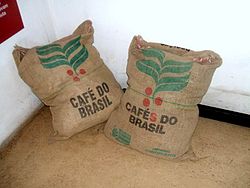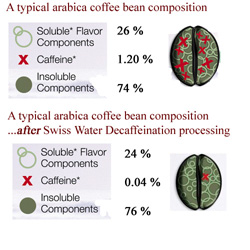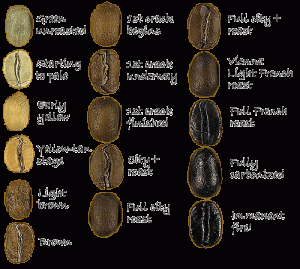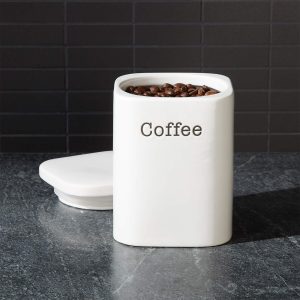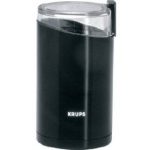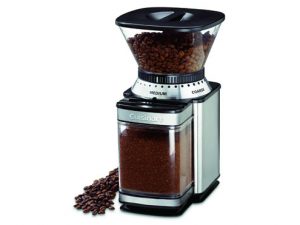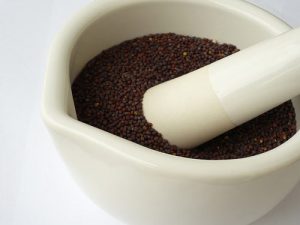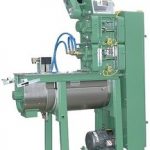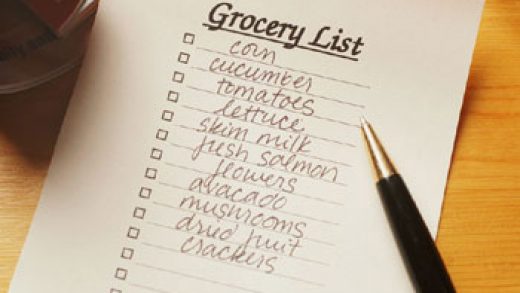Coffee beans leave their home in tropical regions all around the world as dry, green beans. Processors and Roasters small and large then take on the rest of the process.
Some beans will be decaffeinated using one of two methods. The most common is to soak the beans in water, which draws out much of the caffeine. Another method is to apply steam which draws out caffeine oils from the beans. In either case, a small amount of caffeine will remain in the beans. The caffeine that is removed is sold to the pharmaceutical industry.
The most delicate part of processing is the roasting. This is more of an art than a science and requires a skilled human operator who gauges the smell and color of the roasted beans. Mere seconds can be the difference between a perfect roast and coffee that’s burned and useless.
Here’s something you might not know. The lighter the roast, the higher the caffeine content. Breakfast blends usually use what’s called a City roast. This type of coffee is complex in flavor because certain oils are destroyed by high heat. The darker roasts, French, Italian, and Espresso, have a bolder, sweeter flavor but less caffeine. Medium roasts, also called House or Classic roasts, combine the qualities of both light and dark. This is an all-purpose roast found in the most commercially available blends and coffee served in restaurants and coffee shops.
Storage becomes an important aspect at this point. Air, heat, and moisture are the enemies of keeping coffee fresh and flavorful. But there are some myths about the proper way to store your coffee, whether already ground or as whole beans.
It is true that if possible beans should not be ground until just before brewing. However, if properly stored, pre-ground coffee will lose only a small amount of its character while waiting to be brewed.
You’ve probably heard that you should keep your coffee in the refrigerator or freezer. But it’s not as simple as that. In fact, continually removing and replacing coffee as ground or as beans from the cold environment to the relative warmth of your kitchen can quickly destroy the quality of the coffee. If you’re not going to use the coffee for a couple of weeks, put it in the freezer. If the time frame is more than a couple days but less than a couple weeks, the refrigerator is the best place for the coffee. But if you’re using it every day, just keep it in an air-tight, opaque container in a cool, shady spot in the kitchen.
If you buy whole beans, you’ll have to grind them at home. Yes, there are still some grinders in some grocery stores, but they are mostly gone. They cause a big mess and are hard to clean. They’re also no better than buying a can of pre-ground coffee.
There are two types of grinding in common use today: chopping and burr grinding. Chopping is what you see most often in homes. This uses two steel blades to grind the beans and depends on the amount of time in the grinding to determine fineness. However, because this method produces a lot of coffee dust, it should only be used for drip and percolating brewing. The dust will clog up espresso makers and French presses.
Burr grinding is a miniature version of the old-fashioned gris mill in which the seeds are passed between two large stones, one turning while the other is stationary. Today’s burr grinders found in coffee houses and some homes use steel parts but the same principle. The quality or fineness of the grind is determined by setting the distance between the grinding wheel and the burr. This offers more accurate and even grinding with less powder.
There are two other forms of grinding that are less common. One is pounding and the other is rolling. In both cases, a heavy weight is used to break up the coffee beans. Pounding uses a mortar and pestle to grind the beans into a fine powder used for Turkish-style coffees.
Roller grinding is used only by commercial coffee producers because of the size and weight of the machine. The beans are sent between two large steel drums like a pasta machine or the old-fashioned washer wringers.
Next, it’s time to start brewing the ideal cup of coffee.
